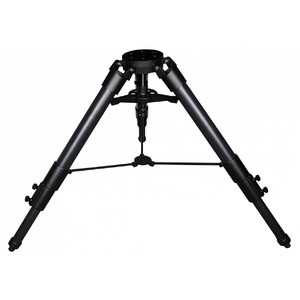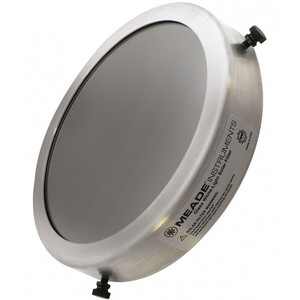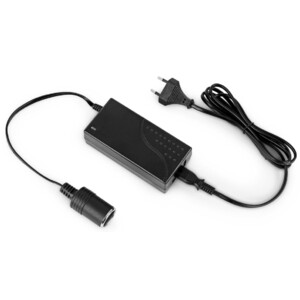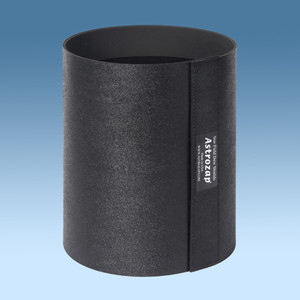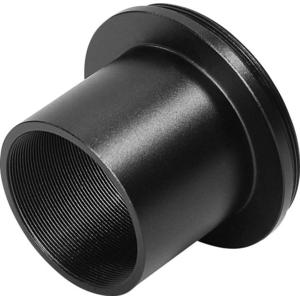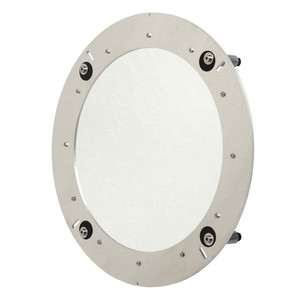The LX600 series, with its advanced technology, really looks after astronomers who are on the move. That begins with their transport - the short SC OTAs are firmly seated in their own compact fork mount, and this can be split for easy transport (split-fork). Setting up the telescope at the beginning of an observing session is child's play - thanks the built-in GPS and Level North Technology, the computer can almost completely automatically align itself. The AutoStar II control with 145,000 objects, then becomes available.
The built-in Starlock camera system supports the exact positioning of the desired astronomical object, looks after automatic error correction (PEC) and takes over auto-guiding. There is no need for an external auto-guider!
The LX600 series offers corrected ACF-SC optics with a fast aperture ratio for short exposure times. An internal Crayford focuser with reduction gearing looks after precise focusing, and cannot cause any mirror-flop.
Advanced Coma-free Optics (ACF): Meade's ACF optical design eliminates the typical aberrations of all mirror optics. Thanks to ACF, the stars are also point-shaped right out to the edge of the image field, displaying no elongated comet-like distortions. The image field is flatter than that of classic Schmidt-Cassegrain telescopes. ACF optical systems show their strengths especially in astrophotographic applications.
Ultra-High Transmission Coatings (UHTC): This special multi-layer coating on the front correction plate provides up to 15% more light transmission. The result -brighter star clusters, finer details in nebulae and more surface detail on planets!
Starlock is a camera and control system that performs three important functions
- Periodic error correction (PEC)
- precise GoTo positioning
- auto-guiding for astrophotography with an accuracy of less than one arcsecond
- The two Starlock cameras with their different optics function perfectly together. The wide-field camera provides a rough positioning. The near-field camera can then position objects with an accuracy of up to one arcminute.
- Alignment also takes place via these two cameras. They bring the necessary alignment stars to the very centre of the field of view, as the basis for optimal GoTo.
- StarLock works using permanent and automatic auto-guiding for maximum tracking accuracy. As soon as the telescope returns to tracking mode after a slew (for example, after positioning an astronomical object), the near-field camera automatically searches for a suitable guide star down to a minimum brightness of 11 magnitude. This is then tracked as until the telescope is moved again.
- The Drift Alignment Assistant makes an optimal polar alignment possible when operating Starlock on an equatorial mount - the telescope slews to a matching star. A 30-second long exposure using the wide-field camera is used to calculate the exact deviation of the telescope from the true celestial pole. The mount then uses previously calculated true position. With the help of the fine adjustment on the polar wedge, the telescope can now be exactly aligned to this point - alignment of the azimuth axis is now perfect!
- Data for StarLock cameras
- wide-field camera - lens diameter is 25mm, focal length is 26mm f/1.04, 1/2 CMOS sensor, field of view is 14.72°x11.78°
- near-field camera - lens diameter is 80mm, focal length is 400mm f/5, 1/2 CMOS sensor, field of view id 57.2 'x 45.8'
- weight 2.7kg
Note: The cameras are only for alignment and control of the telescope. You cannot read out their images. Doing astrophotography requires a separate camera.
AutoStar II: Tour the Cosmos with Just the Push of a Button
The control of the telescope is through the AutoStar II system. Nearly all functions of the telescope are accomplished with just a few pushes of AutoStar II’s buttons. Because the AutoStar II system uses flash (rewritable) memory, your system will be able to grow when new features and enhancements become available.
Some of the major features of the AutoStar II system are:
- Automatically move the telescope to any of the more than 145,000 objects stored in the object library. For example objects of the Messier Catalog, NGC Catalog and 227 named Objects.
- Take a guided tour of the best celestial objects to view on any given night of the year.
- Access a glossary of astronomical terms.
The AutoStar II handbox has soft-touch keys designed to have a positive feel. The LCD (Liquid Crystal Display) is backlit with red LEDs (Light Emitting Diodes) for easy viewing in the dark. The backlit display, key arrangement, and sequential menu structure make AutoStar II extremely user friendly.
It not only matters which telescope you buy but also where you buy it. Our additional services:
- We are a leading telescope dealer and know the devices we sell. Our customer service team will gladly help you after your purchase if you have problems with assembly or operation.
- We provide a copy of the 80-page "Telescope ABC" beginners handbook with every telescope.
